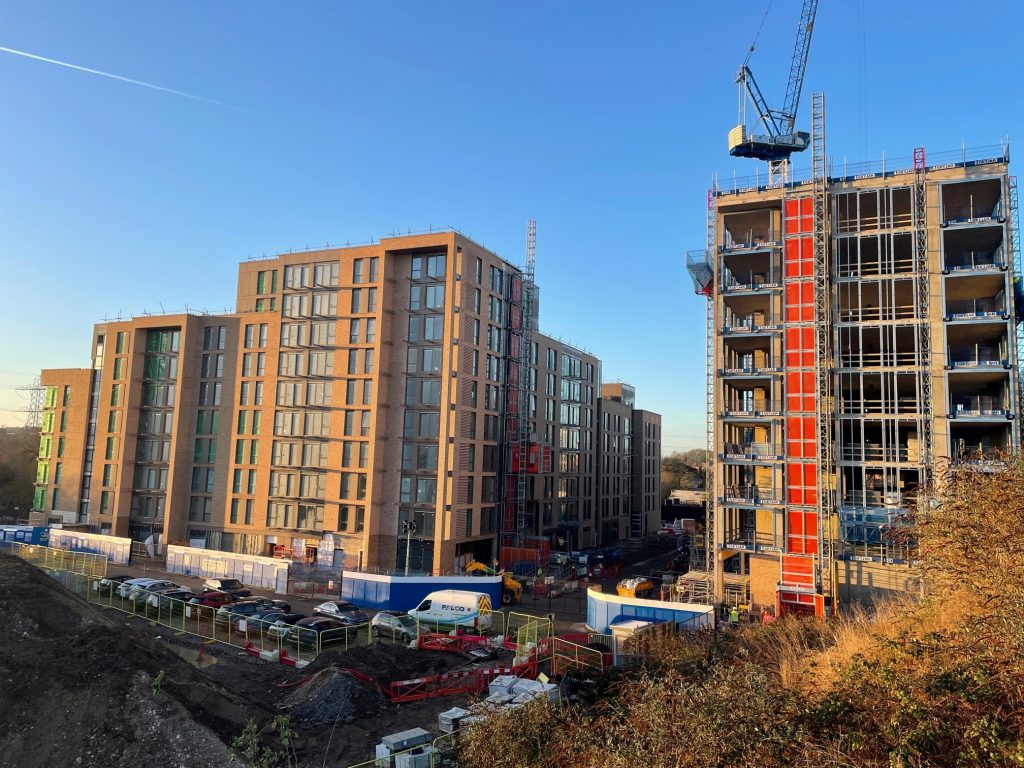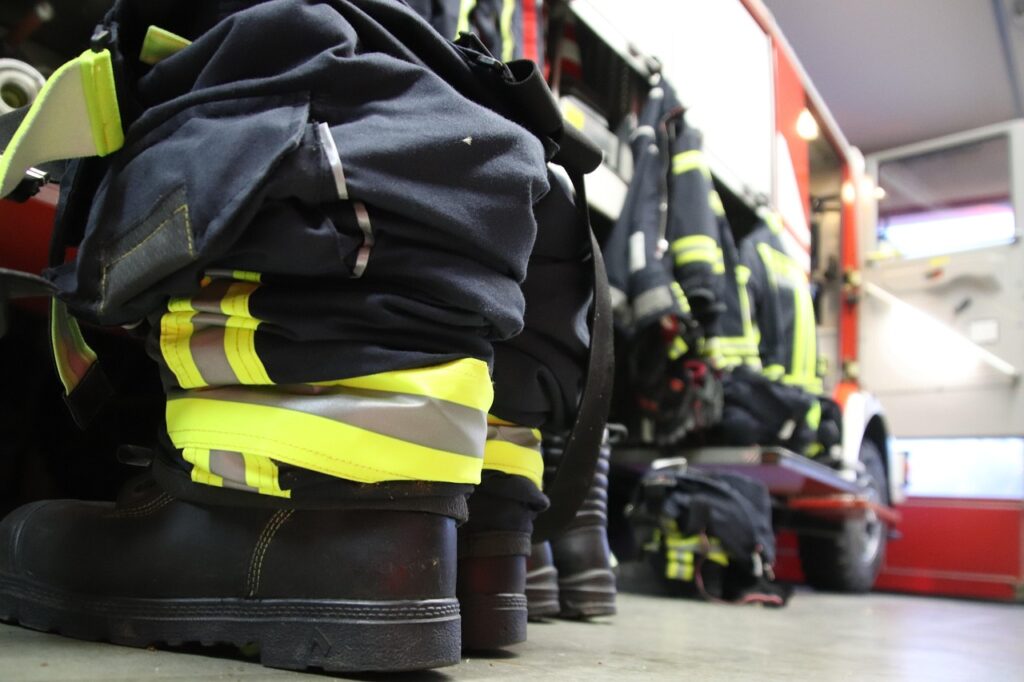A guide to elevating fire safety standards for developers and M&E contractors
In the wake of the Grenfell Tower tragedy and the subsequent overhaul of fire safety regulations, the implementation of evacuation alert systems has become a critical requirement for high-rise residential buildings. Both new-build developments and existing buildings undergoing substantial alterations must adhere to these regulations to ensure occupant safety and regulatory compliance.

Understanding evacuation alert systems
Evacuation alert systems are distinct from traditional fire alarms. While fire alarms detect smoke or heat and alert building occupants to evacuate, evacuation alert systems are specifically designed for use by the Fire & Rescue Service (FRS). These systems enable firefighters to manage a controlled evacuation during an emergency, allowing them to sound alarms selectively to evacuate specific floors or areas rather than the entire building at once. This targeted approach helps prevent panic and ensures a safer and more orderly evacuation process.
Approved Document B, which outlines the fire safety requirements for buildings, was updated in 2022 to include provisions for evacuation alert systems. According to these regulations, all new high-rise residential buildings over 18 metres in height must be equipped with these systems. Additionally, any existing buildings of this height that undergo significant renovations must also comply with this requirement.

Financial and regulatory implications
For developers and M&E contractors, the implementation of evacuation alert systems presents both challenges and opportunities. Financially, the initial costs of installing these systems can be substantial. However, these expenses are justified by the long-term benefits of compliance, reduced liability, and enhanced occupant safety. Non-compliance can lead to severe penalties, including fines, legal action, and reputational damage.
Regulatory bodies such as the Building Safety Regulator have been established to enforce these requirements. For instance, the Building Safety Act 2022 mandates that high-rise residential buildings must register with the regulator and comply with stringent safety standards by specified deadlines. Failure to comply can result in investigations and potential prosecution.
Strategies for implementing evacuation alert systems
- Early planning and design integration: Integrate evacuation alert systems during the design phase of new buildings. This proactive approach ensures that the infrastructure supports these systems without the need for costly retrofits later on.
- Choosing the right system: Decide between wired and wireless systems based on the specific needs of the building. Wireless systems are ideal for retrofitting existing buildings due to their adaptability and minimal disruption, whereas wired systems are typically more cost-effective for new constructions.
- Regular maintenance and inspections: Ensure that evacuation alert systems are regularly inspected and maintained. Appoint a designated team member to oversee system operations, conduct monthly visual inspections, and ensure bi-annual testing by a competent person.
Engaging specialist, certified partners
Working with certified partners who hold BAFE SP207 certification and NSI approval is crucial for the successful implementation and maintenance of evacuation alert systems.
The BAFE SP207 scheme sets the benchmark for the design, installation, commissioning, and maintenance of evacuation alert systems. By achieving this certification, service providers demonstrate:
- Technical competence – Their expertise ensures that every system installed is fit for purpose and meets the highest industry standards.
- Professionalism and quality assurance – As an NSI Gold-accredited company, they operate within a rigorously managed ISO 9001 Quality Management System.
- Third-party validation – Each system installed comes with an NSI/BAFE ‘Certificate of Compliance’, offering peace of mind to building owners, enforcing authorities, and insurers that their system is correctly installed, fully functional, and properly maintained
Our own expertise and rigorous approach, aligned with BAFE SP207 and NSI Gold standards ensures that these systems are designed, installed, and maintained to the highest standards. Our extensive experience includes close collaboration with clients to troubleshoot issues, develop tailored solutions, and execute comprehensive fire safety plans.
Expertise in action: A comprehensive fire safety solution for a Birmingham regeneration scheme
We’ve recently worked on a new development, located in the centre of Birmingham, comprising 600+ Built-to-Rent apartments across three buildings, accompanied by approximately 20,000 sq. ft. of commercial space and various resident amenities.
Once appointed by the M&E contractor, our design department successfully developed a system that not only adhered to the client’s budget, but also met the required timelines to commence work on-site. We were able to design the Evacuation Alert System around an innovative new product from a Fortune 500 company, based on the architecture of one of the market-leading fire alarm systems known for its reliability and integrity. However, since this new product had yet to be officially released, standard documentation was not available. We drew upon our extensive industry experience to design, install, and programme the system according to the client’s specific needs.
Working with TIS Group company, NSP, we developed a holistic approach to fire safety by integrating NSP’s smoke control and ventilation solutions for high-rise buildings with a separate fire alarm system. Alongside the advanced Evacuation Alert System, this approach ensured clear evacuation routes, efficient smoke management, and seamless coordination between systems during an emergency, enhancing safety and compliance throughout the development.
Early planning ensures compliance and safety
The introduction of evacuation alert systems represents a significant advancement in fire safety for high-rise residential buildings. For developers and M&E contractors, adhering to these new requirements is not just about compliance but also about protecting lives and property. By planning early, selecting appropriate systems, and partnering with certified professionals, stakeholders can ensure that their buildings are safe, compliant, and equipped to handle emergencies effectively.
As fire safety regulations continue to evolve, the role of evacuation alert systems will become even more prominent. Staying informed and proactive in implementing these systems will help developers and contractors navigate the regulatory landscape and contribute to safer residential environments.
Latest news
Why real compliance isn’t a checkbox – it’s a board-level superpower
It’s time to change the conversation – from compliance as a constraint, to compliance as a strategic advantage.
Why the cheapest option can be a step backwards for compliance, safety and service
Everyone promises low prices and claims to hit the brief. But is going with the lowest bidder always the smartest choice?








